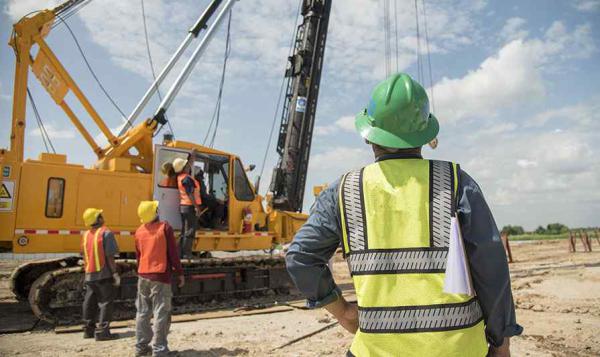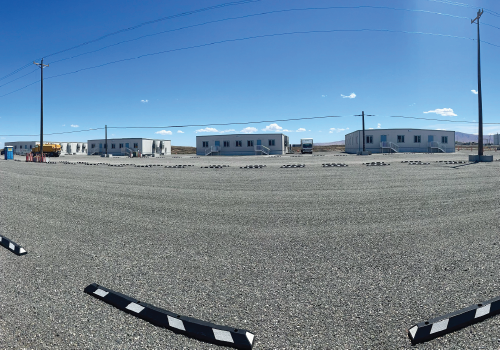How Will Robots Impact The US Construction Industry?
Some say robots are the future. So what would it be like if robots became a commonplace part of the construction industry? Imagine a construction site without humans: a street laying machine, masonry robots, building survey and inspection drones, autonomous mining trucks, remote control bulldozers, and 3D printed bridges. Robots are definitely here to stay, but how will their involvement on construction sites change the way the construction industry operates? Let’s explore the pros and cons of robots in construction.
Pros of robotics in construction
Overcome the labor shortage

The skilled labor shortage has been the center of discussion for a few years now. The 2017 Commercial Construction Index, compiled by USG Corp. and the U.S. Chamber of Commerce, states that contractors are worried over the availability, training, and cost of hiring skilled workers in 2018.
Reasons for the shortage are varied. When the 2008 recession hit the country, many construction workers who lost their jobs changed careers and never re-entered the workforce. Meanwhile, there is a lack of interest in the new generation to take up labor-intensive jobs. Robots can help fill the labor shortage gap, since one robot can perform jobs for multiple workers in a single day, requiring fewer workers for a project.
Speed
A bricklaying robot can lay about 3,000 bricks a day, which is five times more than the average experienced bricklayer. It can work without time off, lunch breaks, or rest. Drones can survey sites and give direct feedback to computer systems, speeding up the survey and inspection process.
3D printing can produce materials and structures for builds. For example, in China a company called WinSun has built a 3D printer with a robotic arm capable of making 10 single story structures in one day.
Safety
Construction sites aren’t the safest of places. Injuries and fatalities happen every day. Exposure to extreme weather, dust, working at a height and operating heavy machinery present just a few risks.
However, robots can operate in situations that could be considered dangerous for humans, decreasing the chances of construction worker injuries on site.
Take a look at the exoskeleton – a metal framework with motorized muscles to increase the wearer’s strength and make lifting heavy objects easier.
Cons of robotics in construction
High initial investments
While a brick laying robot like SAM does the work of 6 humans, it’s not exactly cheap. At a retail price of $500 thousand, SAM doesn’t look like something all contractors could easily afford. However, robots in the construction industry are expected to get cheaper, and the global construction robots market to grow at a rate (CAGR) of 17.5% forecasted from 2023 to 2030.
Fewer jobs
Robots can’t completely replace humans on construction sites, but they can take over repetitive tasks, which will impact people with such skill sets. However, their advent also creates a need for people with an interest in programming and new technologies.
Need for training
New technologies mean acquiring new skills. Robots require trained people to handle them, so the construction industry will need to spend time and money training people to use state-of-the-art technology. On-site maintenance and repair experts will also be required to resolve any malfunctions.
Future of robotics in construction
Exploring how robots and the human workforce complement each other can make the industry safer and more efficient, and the new generation could step into positions that focus more on programming and operations. With labor-intensive tasks being performed by robots, humans could engage in more creative activities and construction could reach new heights.
Here’s a sneak peak at what the future could look like with the tech of today:
3D-printing robots
A Dutch 3D-printing firm, MX3D, printed a steel footbridge to go across Amsterdam's Oudezijds Achterburgwal canal with four of its MX3D metal robots. The finished bridges is 12.5 meters long (41 ft), and took six months to print. It's composed of 4,500 kg (9,921lb) of stainless steel, along with 1,100 km (684 miles) of wire.
Self-driving vehicles
Built Robotics is developing autonomous construction equipment. They’re proud to show off Mary-Anne, a self-driving skid steer. Caterpillar is another company working on autonomous equipment. A good example is its more than 900 horsepower remote controlled bulldozer.
Demolition robots
A company called Husqvarna has developed a series of high power, low weight demolition robots that are extremely maneuverable.
The future of construction is evolving. Modular construction is yet another example of how automation can help increases efficiencies and reduce costs in construction. At Mobile Modular, we develop modern modular buildings used in a variety of industries from construction to education. Find out more about our modular buildings, contact us today!





